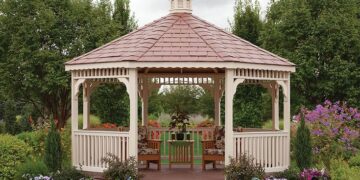Ducted gas heating systems are extensively depended upon to heat dwellings. These systems are incredibly efficient, and they are able to immediately heat the place, no matter how cold it’s outside temperature goes. This is how gas-connected heating works and why installing one in the house is helpful. Ducted heating installation might seem like a difficult task without any professional help.
Understanding the components of a ducted heating system is important. Cold air is being heated by ducted heaters and pumped into various areas in the house. The features of a duct heating system comprise a heating system, a thermal management thermostat, fenders, air flow vents and isolated ducts to convey hot air into the rooms. The ducted heating system will not work correctly when one or more of these elements are missing.
In contrast to conventional heat systems, the ducted gas heating process allows people to heat the entire building with just one heating system. The heating system unit is usually situated either outside the home or within the home’s roof and is interconnected by a network of pipes to separate locations. The ducts are finished in outlets on the flooring or on the room walls and ceiling to be warmed.
The air is taken via a ventilator and heated using natural gas heaters in the central heating unit. A reversal cycle conditioner or a huge gas burner may be used as the heater. Lines that are substantially isolated to limit the loss of heat are then pushed into the air. The warm air then passes into the open area via the vent ports, warming the room. The air is gathered in the room and is recycled back to the heater via the ventilation system. Before being pumped back into the bedroom, the air is heated again. This guarantees that the outside temperatures do not alter the warmth in the interior.
Advantages of the duct heating system:
The gas-fired heater allows users to heat a particular living room or to set a higher temperature for several rooms. Equally efficient is the gas-connected heating system. It enables users to heat the house with natural gas instead of electrically, reducing the energy expenditures and carbon impact. People can stay in a nice and fuzzy house during the chilly winter day with a gas ducted heating system without stressing about receiving a large power charge.
Things to consider before installing a ducted heating installation:
The size of your house and property is quite crucial when choosing if a ducted system fits well. The sale price of the house and any attachment people need to properly and efficiently use the area ultimately decide property measurements.
As a proprietor building company, properties are not the only thing one must consider; people must also take care of the height limit and the positioning of the windows, as these impact the air circulation and how efficient the ducted network is.
An interior and exterior vent structure and both must be situated in the appropriate place for maximising airflow. In an environment where it won’t annoy the neighbour, the outside device will preferably go down the side of the home away from possible children.
People have to decide as to where to put it on the roof to maximise efficiencies with your interior unit, but they also have to consider how much roof space it takes for the staff to set up and repair the system periodically. If there is little room on the roof, the installer might find it difficult and be positioned in an area that will not be efficient at home.









